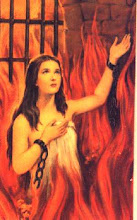Wednesday, January 27, 2010
Musical Ethnography
So, after much searching and agonized consideration, I chose Polka Music for my Musical Ethnography.Although polka is not a major genre in the Dallas, Ft. Worth area, there is still a small and dedicated fan base. KNON, a small independent radio station, plays polka music on Sunday afternoons. Personally, I have heard Polka music being played live at two area restaurants. I will form the min body of my paper from these two examples of polka culture in the area. I know that many people will choose music that they have grown up with or are otherwise familiar with. I wished to research a music that I know virtually nothing about because it would give me the opportunity to do explore a different culture and not feel weird about "intruding" into an others culture.Polka music is much more common in cities with larger German and Eastern European populations such as Austin and San Antonio. However, the few German and Eastern Europeans in the area have held on to some vestige of their traditional music. Although I am unfamiliar with polka, the instrumentation and the musical structure are very similar to traditional Mexican Music. The use of the accordion is prominent in both. As well are the rhythms and beats. So polka, although new to me, will still be cognizant for me. Polka, in other words wont be totally alien, and thus won’t be as easy to ride off as a curiosity.
Saturday, January 16, 2010
Music Cultures: New York No Wave Movement
To be frank, most of the music that I listen to does not fit into any musical culture. Mostly, I listen to “post-bands” that are although influential, self contained in terms of music culture.
To mind I do believe that one music culture that has influenced me was the short lived mid-1970’s “No Wave” movement of New York City.
The fundamentals of No Wave are not strictly defined because it is very difficult to find two artists who are similar in terms of sound. Many would describe the music as “atonal”, but I assert that this is not a fair criticism of the music. By stating that No Wave atonal, critics assume that No Wave was supposed to be another form of Rock and Roll, however nothing can be farther from the truth. No Wave is in fact a repudiation of Rock and Roll. By crating jarring and chaotic soundscapes and using trance-inducing rhythms, the No Wave artists were in attempt to subvert both the self-indulgent epics of Progressive Rock and the sped-up bubblegum of Punk. Some notable No Wave artists include Lydia Lunch, James White and the Blacks, Glen Branca, Teenage Jesus and the Jerks, DNA, The Contortions and Sonic Youth.
The No Wave movement was not confined to music. Often artisans of one medium would try their chances with other forms of expression.
More than anything, perhaps No Wave was an attitude. Aggressive, dysfunctional, possibly nihilistic, possibly sociopathic, it was art and not art. Art, as in established art, was blasphemy to No Wave, who saw the destruction of art as an institution as a noble cause. For all these reasons it was meaningful to me because through it I realized that I’m just not that good at being a well-adjusted, likable person. But, hey, I’ll always have NY 1977.
To mind I do believe that one music culture that has influenced me was the short lived mid-1970’s “No Wave” movement of New York City.
The fundamentals of No Wave are not strictly defined because it is very difficult to find two artists who are similar in terms of sound. Many would describe the music as “atonal”, but I assert that this is not a fair criticism of the music. By stating that No Wave atonal, critics assume that No Wave was supposed to be another form of Rock and Roll, however nothing can be farther from the truth. No Wave is in fact a repudiation of Rock and Roll. By crating jarring and chaotic soundscapes and using trance-inducing rhythms, the No Wave artists were in attempt to subvert both the self-indulgent epics of Progressive Rock and the sped-up bubblegum of Punk. Some notable No Wave artists include Lydia Lunch, James White and the Blacks, Glen Branca, Teenage Jesus and the Jerks, DNA, The Contortions and Sonic Youth.
The No Wave movement was not confined to music. Often artisans of one medium would try their chances with other forms of expression.
More than anything, perhaps No Wave was an attitude. Aggressive, dysfunctional, possibly nihilistic, possibly sociopathic, it was art and not art. Art, as in established art, was blasphemy to No Wave, who saw the destruction of art as an institution as a noble cause. For all these reasons it was meaningful to me because through it I realized that I’m just not that good at being a well-adjusted, likable person. But, hey, I’ll always have NY 1977.
Subscribe to:
Comments (Atom)
